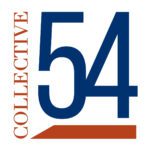Collective 54 founder Greg Alexander discusses how to re-think service design and delivery to accelerated profits.
TRANSCRIPT
Sean Magennis [00:00:15] Welcome to The Boutique with Capital 54, a podcast for owners of professional services firms. My goal with this show is to help you grow scale and sell your firm at the right time for the right price and on the right terms. I’m Sean Magennis, CEO of Capital 54 and your host. On this episode, I will make the case there are three commandments of service design. The service offering is to the founder of a professional services firm, what the product is to the founder of a product company. It’s how they deliver value to the client and designing it correctly is a mission critical task.
Sean Magennis [00:01:01] I’ll try to prove this theory by interviewing Greg Alexander, Capital 54’s chief investment officer. Greg is actually one of the pioneers in service offering design in the boutique professional services industry. His approach has helped many founders rethink how they deliver their service value, leading to accelerated profits. Greg, great to see you. Welcome.
Greg Alexander [00:01:29] Good to be here.
Sean Magennis [00:01:30] OK, Greg, let’s jump in. Explain to our listeners why they should care about this subject.
Greg Alexander [00:01:36] OK, so many founders and executives leading boutiques are not imaginative when designing their service offerings. They do not think about how to design the service in a way that increases the value it brings to clients while simultaneously decreasing the cost to deliver it. So let me share a story to make this point. Not too long ago, I met a brilliant bookkeeper. She developed a way for small business owners to outsource bookkeeping for one hundred and nineteen bucks per year. Her prospects are those who do bookkeeping in-house, paying internal staff on average 40,000 dollars per year. She is, get this, three hundred and thirty six times cheaper for the same service as you can imagine, she is shooting ducks in a barrel and growing like a weed. So how did she do it? She reimagined. Our bookkeeping should be performed by uniquely blending technology automation in offshore labor. This is an example of a boutique founder winning because of intelligence service design.
Sean Magennis [00:02:42] Geez, I would not put growth and bookkeeping in the same sentence, but it seems to me this is a commodity service with an with an attractive growth prospects.
Greg Alexander [00:02:52] When I met her, I entered the meeting with the same assumption and she corrected this false assumption by telling me that she is one of a 183,000 bookkeeping firms in the U.S. That is a lot of firms, a lot of firm owners making money in the bookkeeping space.
Sean Magennis [00:03:09] And why are you attracted to such a crowded field?
Greg Alexander [00:03:13] I am attracted to her because she’s going to take lots of share. For instance, her typical competitor charges a small business owner sixty two hundred dollars per year for the same service. The way this will play out is more and more small business owners will outsource bookkeeping because of the 40000 dollar per year internal cost mentioned earlier. When these new prospects enter the market, they will look at her service at 119 dollars a year in her competitor’s service at sixty two hundred dollars a year. She’s going to win a lot of deals and take a lot of share. She just needs to get into as many deals as possible. Her close rate will be crazy high. This is why I’m attracted to her.
Sean Magennis [00:03:55] Greg, this is a great story. What lessons should the audience take from this?
Greg Alexander [00:04:00] Gosh, there are many. Let me share a few. So the first lesson is to be imaginative with designing a service. Too many boutique founders, a conventional in this area, for example, they turn their expertize into a methodology. They hire expensive domestic labor, train them on it and take it to market. This conventional approach constrains growth. Why? To earn an acceptable margin on this, a founder must charge a certain price and sometimes his price will price them out of the market. As you can see in the bookkeeping story, a little tech automation and offshore labor can go a long way. The second lesson is commodity services are ripe for disruption prior to meeting her. I would not have believed that bookkeeping is a growth industry and in the aggregate it is not. But she is a growth company. What is different between her and her industry? Intelligent design. The third lesson takes us to the three commandments of service design. Are you ready for them?
Sean Magennis [00:05:00] Yes have at it.
Greg Alexander [00:05:01] OK, so clients are boutiques for one of three reasons. The first reason is you can do what they can do better. The second reason is you can do what they can do faster. The third reason is you can do what they can do cheaper. Ideally, the boutique combines better, faster, cheaper into a single value proposition. And when I say better, faster, cheaper, I mean in relation to the alternatives, which can be internal staff, other boutiques, the big firms, etc.. So the three commandments of service design are better, faster, cheaper.
Sean Magennis [00:05:38] Excellent. I understand the three commandments better, faster, cheaper. How should we listen to put them to work in his or her business?
Greg Alexander [00:05:47] I suggest two immediate actions. First, screen all your current service offerings against the Three Commandments. If they are not clearly better, faster or cheaper than the alternatives, redesign them or sunset them. Second, screen your service roadmap against the Three Commandments. Do not bring a new service to market until you know for sure it is better, faster and cheaper than the alternatives.
Sean Magennis [00:06:13] Greg, that’s great practical advice. Thank you. Of course, this assumes our listeners have a service roadmap, but that is a topic for another day.
Greg Alexander [00:06:22] It is.
Sean Magennis [00:06:26] And now a word from our sponsor, Collective 54, Collective 54 is a membership organization for owners of professional services firms. Members joined to work with their industry peers to grow scale and someday sell their firms at the right time for the right price and on the right terms. Let us meet one of the collective 54 members.
Jessica Nunez [00:06:52] Hello, my name is Jessica Nunez. I own TruePoint Communications. We serve a company’s marketing needs with B2B and consumer services. Our clients turn to us to propel their brand forward through marketing, public relations and social media. We solve this problem by providing a custom marketing and communication strategy tied to business goals and designed to meet the unique needs of their core audience. If you need help with awareness for your business that propels your brand forward, visit our website at TruePointAgency.com.
[00:07:27] If you are trying to grow scale or sell your firm and feel you would benefit from being a part of a community of peers, visit Collective54.com. OK, this takes us to the end of the episode, let’s try to help listeners apply this. We end each show with a tool. We do so because this allows a listener to apply the lessons to his or her firm. Our preferred tool is a checklist and our style of checklist is a yes-no questionnaire, we aim to keep it simple by asking only 10 questions. In this instance, if you answer yes to eight or more of these questions, your service design is working for you. If you answer no too many times your service design is likely getting in the way of your attempts to scale. Let’s begin.
Sean Magennis [00:08:27] Number one, are you offering a service that clients already by? Number two, are there many legacy firms providing the service? Number three, are these legacy firms ripe for disruption?
Greg Alexander [00:08:45] Yes, I mean, one, two and three, if you answer yes to those three questions, I mean, you’re in a great space.
Sean Magennis [00:08:49] Yep.
Greg Alexander [00:08:50] Just outmaneuver everybody.
Sean Magennis [00:08:52] Number four, can you use less expensive labor to deliver it?
Greg Alexander [00:08:57] And that’s where to start, because 80 percent of the cost structure is is human capital.
Sean Magennis [00:09:01] Number five, can you use technology automation to streamline it? Number six, can you perform the service better than the alternatives?
Greg Alexander [00:09:13] And that’s in the eyes of the beholder. The client.
Sean Magennis [00:09:14] Right. Number seven, can you perform the service faster than the alternatives? And number eight, can you perform the service cheaper than the alternatives? Number nine, can you combine better, faster and cheaper into a single value proposition? And number ten, are you staying away from the latest fad that might not have staying power?
Greg Alexander [00:09:45] So number 10 may appear to be out of place when compared to one through nine, but it’s been there for a reason, and that is sometimes boutique owners think the only way to grow is to get into the new thing. And as you saw with bookkeeping, that’s not true. You know, if you’re in a large, quote, commodities market, then be the disruptor. And if you are the disruptor, meaning you do things differently, can make a lot of money in traditional marketplaces.
Sean Magennis [00:10:08] That’s what I love about this Greg, it’s introducing contrarian thoughts, very powerful. So in summary, entrepreneurs often do not put innovation and service design in the same sentence. Boutiques do not look at themselves as disruptors. The innovator label is most often only applied to leaders of product companies. Yet the facts point in another direction. 67 percent of the US economy comes from the service industry, and 49 percent of the workforce is employed by small businesses. The biggest opportunity for you is to disrupt the legacy professional services sector. If you enjoyed the show and want to learn more, pick up a copy of Greg Alexander’s book titled The Boutique How to Start Scale and Sell a Professional Services Firm. Thank you, Greg. I’m Sean Magennis and thank you for listening.

